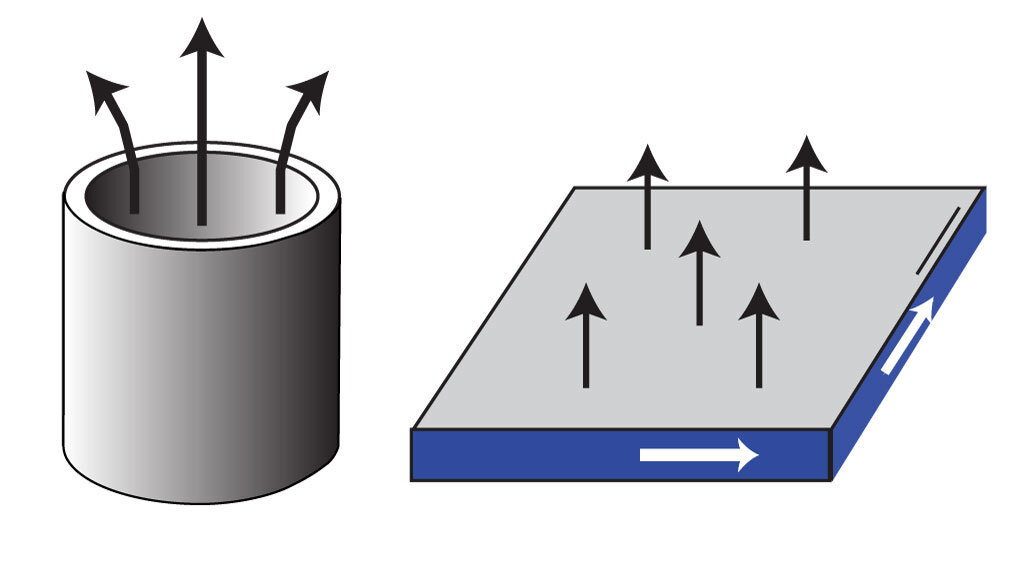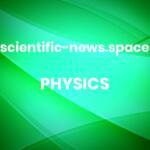Superconductors are getting edgy.
For the first time, scientists have spotted a superconducting current traveling along the edge of a material, like a trail of ants crawling along the rim of a dinner plate without venturing into its middle.
Normally, such superconducting currents, in which electricity flows without any loss of energy, permeate an entire material. But in a thin sheet of molybdenum ditelluride chilled to near absolute zero, the interior and edge make up two distinct superconductors, physicist Nai Phuan Ong and colleagues report in the May 1 Science. The two superconductors are “basically ignoring each other,” says Ong, of Princeton University.
This distinction between exterior and interior makes molybdenum ditelluride an example of what are called topological materials. Their behavior is closely tied to the mathematical field of topology, in which shapes are considered distinct only if one can’t be molded into another without cutting or melding (SN: 10/4/16). In topological insulators, electric currents can flow on the surface of a material but not the interior, like a potato covered in tinfoil (SN: 5/7/10).
Likewise, topological superconductors are superconducting in their interiors and behave differently on their surfaces. Although some researchers suspected topological superconductors might also host superconducting current on their edges, none had yet been found. But the new observation is “extremely convincing,” says physical chemist Claudia Felser of the Max Planck Institute for Chemical Physics of Solids in Dresden, Germany, who was not involved with the research. “It’s really, really super exciting.”
Molybdenum ditelluride is a metal-like compound called a Weyl semimetal (SN: 7/16/15). Its unusual properties might mean it could harbor Majorana fermions, disturbances within a material that scientists hope to use to create better quantum computers. Such topological quantum computers are expected to resist the jitter that impairs quantum calculations (SN: 7/20/17).
In their experiment, Ong and colleagues gradually ramped up the magnetic field on the material. They simultaneously measured how much they could increase the electric current before the superconducting state was lost, a value known as the critical current. As the magnetic field increased, the critical current oscillated, getting larger, smaller, and larger again in a repeating pattern — a hallmark of an edge superconductor.
The oscillation results from the weird physics of superconductors, in which electrons form partnerships called Cooper pairs. The pairs act as a unified whole, all taking on the same quantum state, or wave function, which determines the probability of a particle being found at a particular location.
 A superconducting current (white arrows) runs around the edge of a thin sheet of molybdenum ditelluride (illustrated on right) in a magnetic field (black arrows). A similar effect in a ring of superconductor (left) was seen in a classic study known as the Little-Parks experiment.W. Wang et al/Science 2020
A superconducting current (white arrows) runs around the edge of a thin sheet of molybdenum ditelluride (illustrated on right) in a magnetic field (black arrows). A similar effect in a ring of superconductor (left) was seen in a classic study known as the Little-Parks experiment.W. Wang et al/Science 2020
A property of the wave function called the phase is analogous to twists in a party streamer hung around the edges of a room, Ong says. If connected at the ends, the party streamer can twist once or twice, but never 1.2 times, for example, because the ends wouldn’t align. Similarly, the phase must make a full number of twists around the material. The interplay between the increasing magnetic field and the twisting constraint causes the critical current to oscillate.
A classic 1960s study known as the Little-Parks experiment is closely tied to the new work. In that study, a superconductor shaped like a cylinder exhibited related oscillations in a changing magnetic field. But in Ong and colleagues’ version, the superconducting current runs around the edge of a solid chunk of material rather than a physical cylinder.
“It’s a very clever and beautiful way of assessing whether or not there’s an edge current” that is superconducting, says physicist Smitha Vishveshwara of the University of Illinois at Urbana-Champaign, who was not involved with the research.
Source: Physics - www.sciencenews.org



